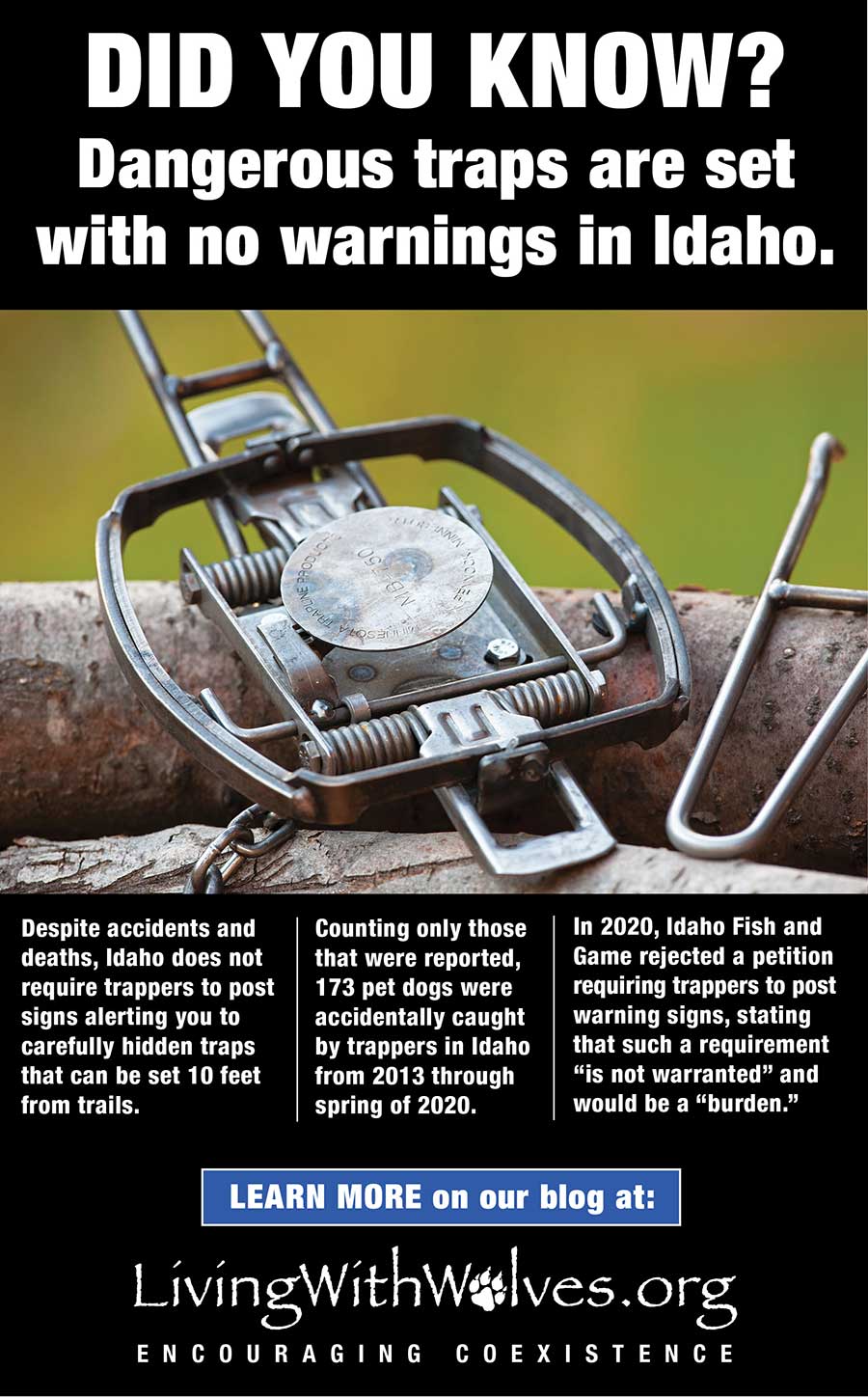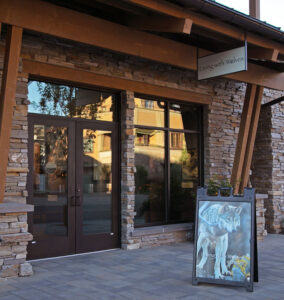Traps Set With No Warnings
In March of 2020, the Idaho Department of Fish and Game (IDFG) received a petition requesting that trappers be required to place warning signs at public trailheads, and on public trails and campgrounds within 25 feet of traps and snares. At the following quarterly meeting, IDFG decided against the petition. The intent was for signs to be visible from a distance of at least 25 feet to help alert trail users to take action to avoid the injury or loss of a family dog or injury to a child. Although IDFG recommends that trappers post signs, it is not a requirement. Meanwhile, IDFG continues to expand trapping opportunities. Not only has the length of the season been increased, but trapping is now allowed on lands (public and private) where it was previously prohibited. As a result, the possibility of encountering traps and snares while recreating continues to increase.
Trappers opposed the petition, suggesting that posting warning signs near where they set their traps “could become expensive and time-intensive.” Certainly, each sign could be used countless times and hanging a sign takes much less time than anchoring, baiting, setting and disguising a trap. Trappers and IDFG officials both suggested that posted signs could result in the theft of traps or people tampering with them, though either action is punishable by a fine of up to $1,500.
While only about 2,000 trappers conduct their operations in Idaho every year, about 1.4 million Idaho residents participate in outdoor recreation. For people from out-of-state, Idaho is also a mecca for outdoor recreation and tourism, two of the fastest growing industries in the state. Over 10 million tourists visit Idaho every year.
Despite the high volume of recreational users on trails, trappers are allowed to set leg-hold traps and snares as close as 10 feet from any unpaved public trail. In Boise for example, the Rivers to Ridges trails have more than one million user-days per year, yet trapping is permitted. Dogs have been trapped on these trails in the Boise Foothills while hiking with their owners.
Traps and snares can also legally be placed as close as 300 feet from any designated public campground, trailhead, paved trail, or picnic area. Most Idahoans and visitors to the state are unaware that trappers are legally allowed to place traps so close to public trails and campgrounds.
Snares are often constructed from wire of a gauge that cannot be cut with ordinary wire cutters. Even if a person happened to have an appropriate tool to cut the snare and free their trapped animal, many snares are designed to tighten so quickly when tripped, that there are only minutes to act before the animal is strangled.
Because traps and snares so often injure, maim and kill animals, it is reasonable to require that warning signs be posted so that people can take proactive, preventative measures to protect pets. People recreating with their dogs should be allowed to safely use public lands without having to run the risk of falling victim to a well-disguised and deliberately placed hazard.
In 2020, at least two dogs were killed during Idaho’s most recent trapping season within 40 miles of Sun Valley, the heart of Idaho’s outdoor recreation industry. During the same period, other dogs in the area went permanently missing and another lost a foot to a trap. While for different reasons, many incidents likely go unreported, in the seven Idaho trapping seasons preceding the 2019-2020 season, 15 dogs were reported to be caught in traps. According to news reporters, at least four more occurred during the 2019-2020 season.
When IDFG rejected the trapping signage petition, the department’s official statement indicated that, “regulated trapping in Idaho generally presents limited risk to domestic dogs,” and that signage was “not warranted” and would be a “burden.”




